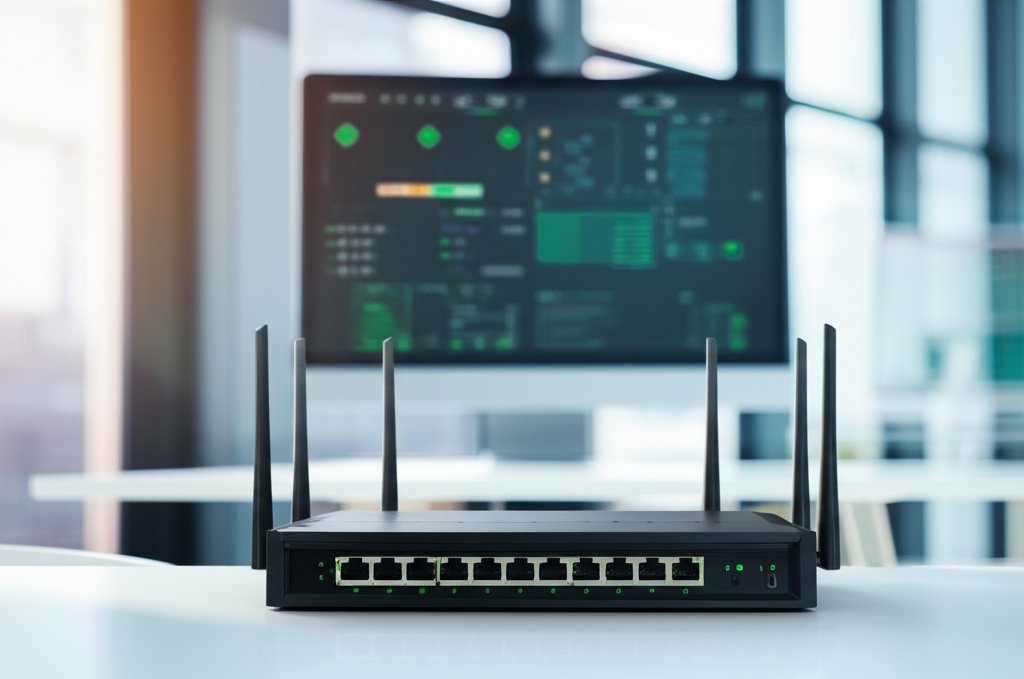Zero Trust for Small Business: Securing Your Cloud & Office Data (Even If It’s Hybrid!)
Every small business today operates in a complex digital landscape. Your critical data likely lives everywhere – customer records in a cloud CRM, finances in an online accounting system, but perhaps your crucial internal files still reside on a server in your office. This blend, known as a hybrid identity environment, offers incredible flexibility, but it also creates a significant security challenge: how do you protect everything when your data and your team are everywhere?
Traditional security models, designed for a simpler ‘office-only’ world, simply can’t cope with this new reality. They leave your valuable assets exposed to increasingly sophisticated threats. This is precisely why Zero Trust security isn’t just a buzzword; it’s the fundamental shift small businesses need to safeguard their operations, maintain customer trust, and secure their future against modern cyberattacks.
Understanding Your Hybrid Identity Environment: Why It’s a Security Game-Changer
Let’s break down what a hybrid identity environment truly means for your business. Essentially, it’s about managing who can access what, across both your flexible cloud-based services and your traditional, on-premise (on-site) systems. Think of it like this: your business might use Microsoft 365 or Google Workspace for email and documents (that’s cloud), but you also have local file servers, shared printers, and perhaps a specialized software application running on a server in your office (that’s on-premise).
For small businesses, these scenarios are incredibly common. You’ve got employees logging into QuickBooks Online (cloud), but also accessing shared folders on your local office network. Maybe some of your team works from home using company laptops, while others are in the office. This blend is fantastic for flexibility and scalability, but it simultaneously introduces new, complex security challenges that traditional methods struggle to address effectively.
Why ‘Castle-and-Moat’ Security Fails in Your Hybrid World
Historically, cybersecurity was often built like a “castle-and-moat.” You’d erect strong defenses – firewalls, network security – around your internal network. Once inside that perimeter, users and devices were generally considered trustworthy, allowed to roam freely within the ‘castle walls.’
But that old model is failing us now, especially in a hybrid world. Why? Because the “perimeter” has blurred into non-existence. Remote work means employees access resources from anywhere, not just inside your office. Cloud services mean your data isn’t just in your server room; it’s also residing in Amazon, Google, or Microsoft data centers. And critically, cyber threats have evolved to target identities and credentials rather than just trying to batter down your network firewall.
Here are some key challenges your business will face if you rely solely on traditional security in a hybrid environment:
- Confusing Access Management: Your team might have separate logins and permissions for cloud apps versus on-premise resources. This complexity not only frustrates users but also creates potential loopholes and misconfigurations that attackers can exploit.
- Shadow IT Risk: Employees might unintentionally use unauthorized personal cloud apps (like a free file-sharing service) for work-related tasks, creating “shadow IT” that you can’t monitor, secure, or even know about.
- Inconsistent Security Posture: You might have robust security for your office network, but what about your cloud apps? What about remote workers’ home networks? It often results in a patchwork of security, not a consistent, unified defense.
- Heightened Insider Threats: What if a trusted employee’s account gets compromised through a phishing attack? Or what if a disgruntled employee abuses their legitimate access? Traditional security often assumes internal users are safe, leaving a critical blind spot.
- Lack of Comprehensive Visibility: It becomes incredibly tough to know who is accessing what, where, and when across all your scattered cloud and on-premise systems. This lack of complete visibility is an attacker’s dream, allowing them to move undetected.
Zero Trust: The ‘Never Trust, Always Verify’ Approach for Modern Threats
So, if the old “castle-and-moat” security isn’t working, what’s the answer? It’s Zero Trust. The core principle is profoundly simple: “never trust, always verify.” Imagine you’re running a highly secure facility. Even if someone has a badge, you’d still check their ID at every single door they wanted to open, ensuring they have explicit permission for that specific room, right then and there. That’s Zero Trust.
It’s important to understand that Zero Trust isn’t a single product you can just “buy off the shelf.” Instead, it’s a strategic way of thinking about your security. It’s a mindset that assumes every user, device, application, and network connection could potentially be a threat, regardless of whether it’s inside or outside your traditional network perimeter. You verify everything, all the time.
The three core pillars of Zero Trust, simplified for you, are:
- Verify Everyone & Everything (Explicit Verification): This means you always, and we mean always, verify identity and device health before granting access. Is it really your employee? Is their device updated and free of malware? You’re not just checking once; you’re checking continuously based on context.
- Limit Access Strictly (Least Privilege): Give people access only to exactly what they need to do their job, and only for as long as they need it. No “all-access passes” or broad permissions. If a marketing person doesn’t need access to financial records, they shouldn’t have it.
- Always Be Ready for a Breach (Assume Breach): Despite your best efforts, breaches can happen. Zero Trust prepares for this by designing your systems to limit the damage if an attacker does get in. You’re constantly monitoring and looking for suspicious activity, so you can detect and respond quickly.
The Unmistakable Benefits: Why Zero Trust is Essential for Your Hybrid Business
For small businesses navigating the complexities of cloud and on-premise resources, adopting a Zero Trust model offers significant advantages that directly address modern security challenges:
- Seamless, Unified Protection Everywhere: Zero Trust provides a consistent security strategy across both your cloud and on-premise resources. It doesn’t matter if data is in your server room or a cloud app; the same rigorous verification rules apply. This unified approach is especially vital for hybrid identity environments.
- Stronger Defense Against Sophisticated Cyberattacks: By verifying every request, Zero Trust significantly enhances your defense against common threats like ransomware, phishing, and unauthorized access. Even if an attacker gets a password, they’ll hit another wall of verification.
- Better for Remote & Hybrid Work: With a growing number of businesses embracing flexible work, Zero Trust ensures that employees can securely access necessary resources from anywhere, on any device, without compromising your overall security posture.
- Improved Control & Visibility: Because every access request is verified and monitored, you gain much better insight into who is accessing what, when, and from where, across all your systems. This improved visibility is key to early threat detection and rapid response.
- Meeting Compliance Needs: Many data privacy regulations (like GDPR or HIPAA, if they apply to you) require strict access controls and data protection. Zero Trust principles naturally help you meet these stringent compliance requirements.
Actionable Steps: Implementing Zero Trust for Your Small Business
Zero Trust might sound like something only large corporations with massive IT budgets can implement. But that’s not the case! You can start adopting Zero Trust principles with practical, manageable steps, even on a small business budget. It’s about changing your mindset and focusing on foundational security, not necessarily buying all-new complex tech.
- Start with Identity: Your Digital Front Door
- Multi-Factor Authentication (MFA): This is non-negotiable. MFA requires users to provide two or more verification factors to gain access (like a password PLUS a code from their phone). It’s the simplest, most impactful step you can take. Your bank probably uses it; your business absolutely must.
- Strong Passwords (or Passwordless Solutions): The basics still apply. Encourage unique, complex passwords, or explore passwordless solutions that use biometrics or security keys to reduce password-related risks.
- Regular Access Reviews: Periodically review who has access to what, especially when employees change roles or leave the company. If someone no longer needs access to a specific system, revoke it immediately – it’s a critical aspect of least privilege.
- Secure Your Devices: Know What’s Connecting
- Basic Device Health Checks: Ensure all devices accessing your business resources (laptops, phones) are updated, have antivirus software, and meet basic security standards. You wouldn’t let a sick person into your office, right? Don’t let a “sick” device connect to your network.
- Using Company Devices for Work: If possible, provide company-managed devices for work. If you allow employees to use their personal devices (Bring Your Own Device – BYOD), establish clear, strict policies and consider device management tools to ensure security standards are met.
- Segment Your Network (Think Small Zones):
- Micro-segmentation (Simplified): Instead of one big, open office (your traditional network), think of your network as having individual, locked rooms. Only people with specific keys for specific rooms can enter. This means separating critical data or systems into smaller, isolated “zones.” So, if one part of your network is compromised, the attacker can’t easily move laterally to another. This concept is closely related to Zero-Trust Network Access (ZTNA).
- Separating Critical Data: Always keep your most sensitive data (customer lists, financial records) in its own highly protected “zone” with extra layers of verification and monitoring.
- Monitor and Adapt: Security is an Ongoing Journey
- Keep an Eye Out: Implement basic monitoring for unusual activity. This could be as simple as reviewing login attempts or looking for large data transfers at odd hours. Many cloud services offer robust, built-in logging features that are easy to leverage.
- Regular Updates: Keep all your software, operating systems, and security tools updated. Attackers constantly find new vulnerabilities, and timely updates are your primary defense.
- Consider Cloud-Based Security Tools: Built for SMBs
- Many security vendors offer cloud-based solutions that simplify Zero Trust implementation for small businesses. These tools often integrate seamlessly with your existing cloud services and provide identity management, device health checks, and access controls without requiring deep technical expertise. When looking for tools, prioritize ease of use, strong integration capabilities, scalability, and excellent customer support.
Zero Trust: Not Just for Enterprises, But Your Smartest Security Investment
You might be thinking this all sounds too complex or too expensive for your small business. But remember, Zero Trust is fundamentally about changing your mindset and applying practical, foundational security principles. It’s not about installing one magic piece of software, but rather a strategic approach that makes your entire digital environment more resilient and less vulnerable.
In today’s interconnected world, where data lives both in the cloud and on-premise, and employees work from anywhere, traditional security just isn’t enough. Embracing Zero Trust is your smart move to protect your future, safeguard your data, and empower your team to work securely. By starting with those small, manageable steps, you’ll be well on your way to building a truly secure hybrid identity environment, ensuring your business thrives safely in the digital age.




